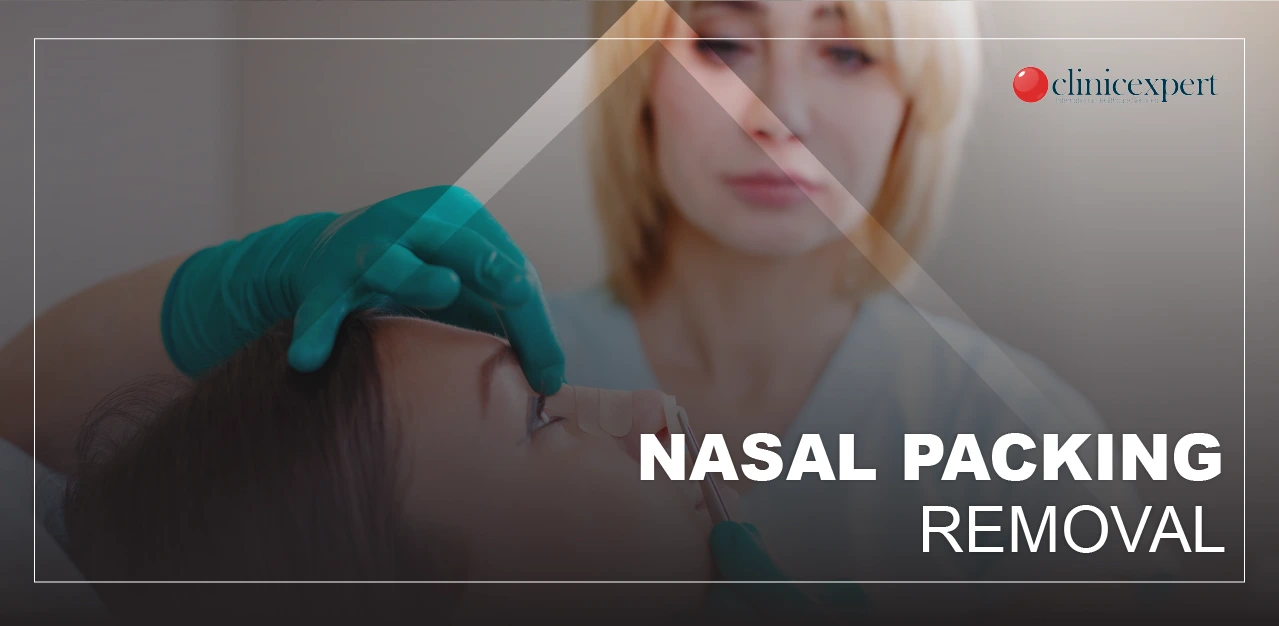Nasal Packing after Nose Job: When Does It Come Out? Precautions After Removal
Nose surgeries, whether for aesthetic or health reasons, involve surgical interventions that often necessitate the use of nasal packing afterward. Nasal packing is a term that may cause anxiety for many rhinoplasty patients and candidates. However, nasal packing is not something to be afraid of; its purpose is to control postoperative bleeding and support the healing process. Therefore, it is an essential tool for nasal aesthetics (rhinoplasty). Here are some commonly asked questions about nasal packing and things to be mindful of after its removal.
What is Nasal Packing?
Nasal packing is a medical material used to support the nasal cavity and control bleeding after nose surgeries, whether for aesthetic or health reasons. Usually made of a soft material, nasal packs are inserted into the nose and remain there for a specific period. The duration varies depending on the type of surgery and the doctor’s recommendation. Previously, sponge-shaped nasal packing applications were common, requiring removal within 3 days at the latest. The silicone packs used today, however, offer much more comfort for patients compared to the older sponge packs.
Nasal packs can be of two basic types: anterior (front) and posterior (back) packs. Anterior packs are typically placed in the front part of the nasal passages, while posterior packs are inserted deeper into the back of the nasal cavity.
How Long Does Nasal Packing Stay After Nose Surgery?
The duration of nasal packing after nose surgery depends on the complexity of the procedure. Generally, in aesthetic nose surgeries, packs stay in place for 1 to 7 days. For more complex surgeries such as functional procedures, septoplasty, or revision rhinoplasty, this period may be slightly longer. However, please note that these are general guidelines. If you have undergone a nose job and are curious about how long your packs will stay, communicate directly with your doctor.
Precautions After Nasal Packing Removal
After the removal of nasal packing, the healing process begins, and it is essential for patients to pay attention to specific aspects. Here are some points to consider after nasal packing removal:
Nasal Hygiene: Nasal hygiene is crucial after nasal packing removal. Use the sprays or drops recommended by your doctor regularly.
Physical Activity: Avoid excessive physical activity after surgery. Steer clear of intense sports or heavy lifting.
Keeping the Head Elevated: Keeping your head elevated while sleeping, especially during the first few days, is important. This helps reduce swelling and contributes to a more comfortable overall recovery.
Doctor Check-ups: Attend your postoperative follow-up appointments regularly. Follow your doctor’s recommendations diligently.
How to Remove Nasal Packing after Rhinoplasty?
The process of removing nasal packing is generally painless; therefore, do not believe in longstanding town talks. Some patients may experience mild discomfort, which is normal. Never attempt to remove your pack yourself! Your doctor or nurse will remove them.
Does Removing Nasal Packing Hurt?
Many patients wonder, ‘Does removing nasal packing hurt?’ The process of removing nasal packing is generally not painful; however, some individuals may experience mild discomfort. After all, pain tolerance varies from person to person. Most patients describe the sensation as a slight pressure or an unusual feeling rather than intense pain. Moreover, the removal is typically performed by a medical professional, such as your doctor or nurse, who is trained to ensure the process is as comfortable as possible. If you do experience any discomfort, we recommend you to communicate openly with your healthcare provider, who can provide guidance and address any concerns you may have.
What is Nasal Packing Slippage after Nose Surgery? How to Prevent It?
While slippage of packs after surgery is rare, it is not impossible. To prevent this, rest as recommended by your doctor, avoid lifting heavy objects, and adhere to nasal hygiene rules.
Differences Between Nasal Aesthetic and Functional Surgeries
Generally, we can categorize nose surgeries into two main types: aesthetic nose surgery and functional surgeries. Aesthetic surgeries aim to improve the shape and appearance of the nose, while functional surgeries aim to correct the functionality of the nose. Therefore, before surgery, discuss with your doctor which type of surgery you are having.
In conclusion, nose surgeries and the use of nasal packing vary from person to person. To ensure a smooth and trouble-free recovery, it is crucial to follow your doctor’s recommendations and communicate any concerns or issues you may have. Wishing you a speedy recovery!

